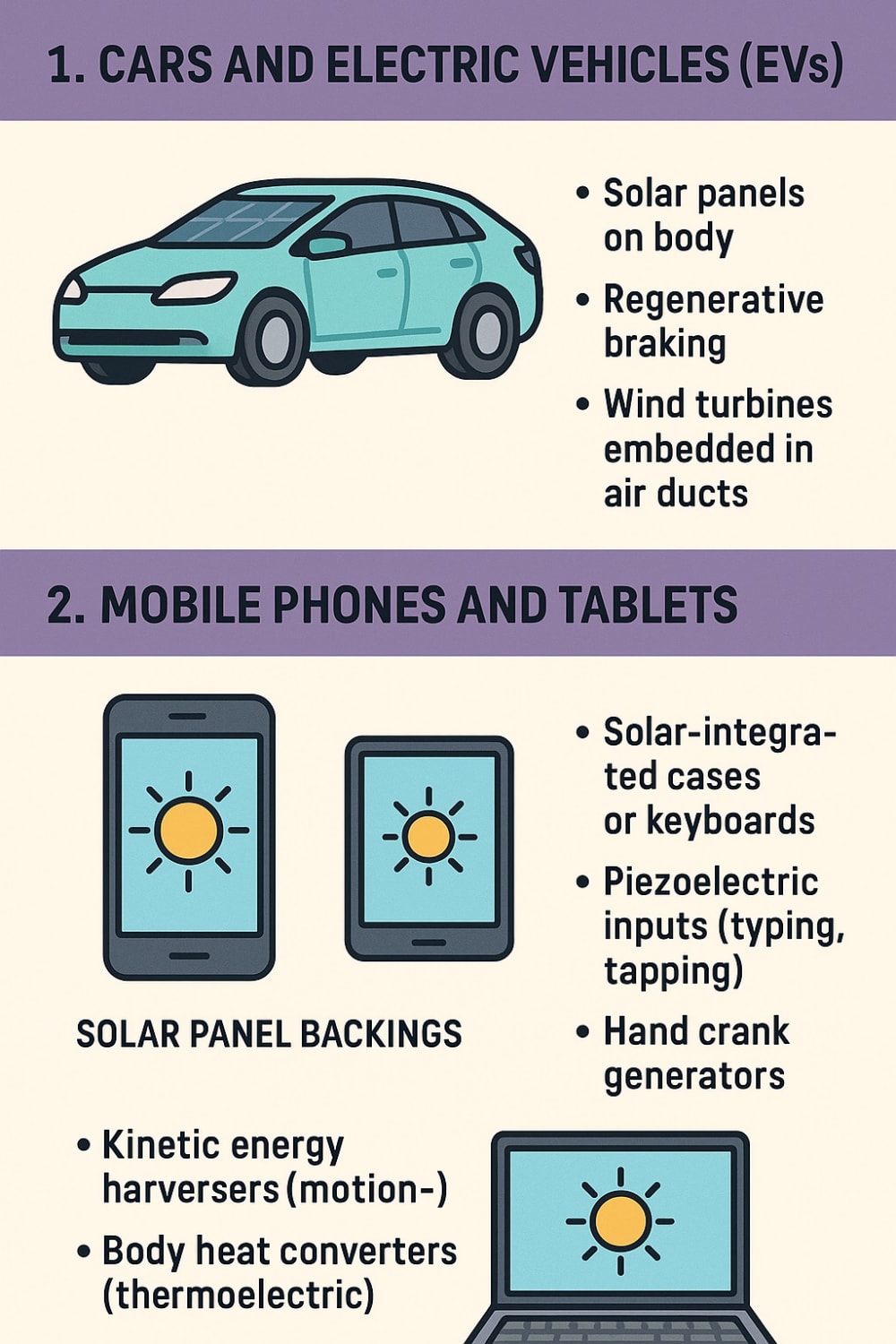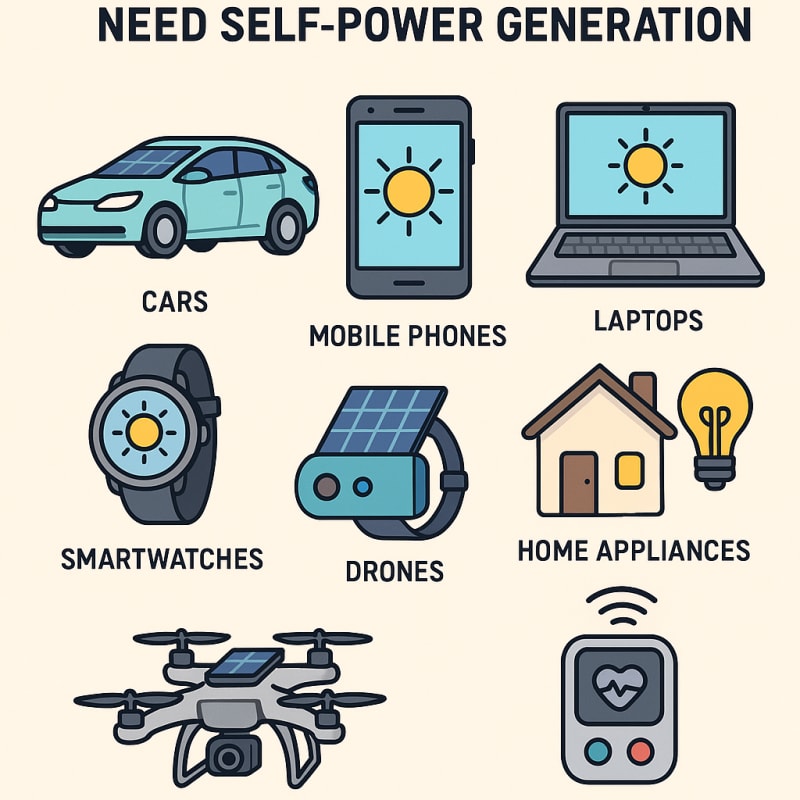Many modern devices and machines rely on external power sources such as batteries, fuel, or electricity from the grid. To enhance efficiency, reduce dependency on charging infrastructure, and enable operation in remote or emergency conditions, these devices could be equipped with self-power generation systems. Below is a description of various categories of materials or equipment that require power and how they could integrate self-powering solutions:
- Cars and Electric Vehicles (EVs):
Currently powered by large batteries or fuel, cars can incorporate solar panels on the roof or body, regenerative braking systems to capture kinetic energy, and small wind turbines to generate electricity from airflow. These features would reduce the need for frequent charging or refueling. - Mobile Phones and Tablets:
These devices depend heavily on frequent charging. By integrating small solar panels on the back, kinetic energy harvesters (which generate power through motion), or thermoelectric materials that convert body heat into energy, they could charge themselves partially or fully. - Laptops and Portable Electronics:
Often used in mobile settings, these could benefit from solar-integrated covers, piezoelectric keyboards (which produce power when pressed), or hand-crank options for emergency charging. - Home Appliances and Smart Devices:
Items like smart lights, clocks, and sensors could include solar cells (especially outdoor versions), harvest energy from movement or vibrations (piezoelectric), or use low-power Wi-Fi energy harvesting techniques, reducing electricity bills and improving reliability during outages. - Medical Devices (Wearables and Implants):
Devices like pacemakers, fitness bands, or glucose monitors can generate power from body heat (thermoelectric generators), motion (kinetic harvesters), or even blood flow. This reduces the need for battery replacements or surgeries. - Drones and Robots:
To extend operation time, drones can have solar wings or charging pads integrated into their base stations. Autonomous robots could use energy harvesting from movement or light exposure. - Smartwatches and Fitness Trackers:
Always-on wearable devices can recharge through solar elements built into the screen, body motion (kinetic systems), or even body heat, allowing continuous use with little to no recharging.
Self-powered technology aims to make devices more independent, eco-friendly, and suitable for long-term, off-grid, or emergency usage. The integration of energy harvesting mechanisms across different sectors could revolutionize how we power and interact with everyday technologies. future humanity survival depends on technologie independece and self operating.
Modern technology increasingly relies on self-sustaining energy systems to enhance efficiency and independence. Devices like electric cars, mobile phones, and smartwatches are now being designed to generate their own power using renewable sources. Innovations include solar panels, kinetic energy harvesters, thermoelectric converters, and regenerative braking systems. These solutions enable continuous operation without frequent external charging, making them ideal for remote environments and reducing reliance on the electrical grid. Self-powering technologies promote sustainability, lower operational costs, and extend device lifespan. As the demand for portable and autonomous devices grows, integrating auto energy generation is becoming essential in design. This shift marks a major step toward energy autonomy, creating smarter, greener, and more resilient systems across all industries. thanks for reading and agree.
Like this entry?
-
About the Entrant
- Name:Khmaissi Ahmed
- Type of entry:individual
- Software used for this entry:Ai






